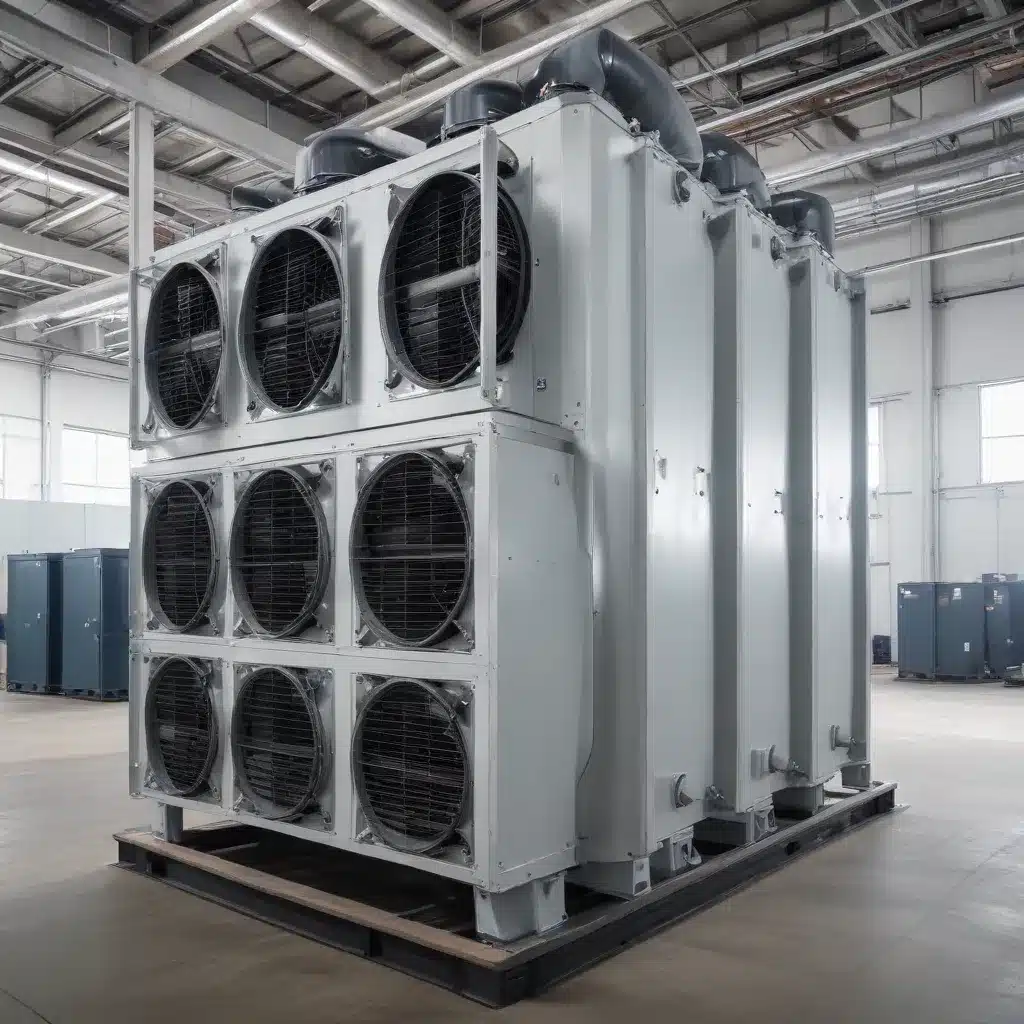
Unlocking the Power of CO2: Transforming Refrigeration and Beyond
As industries worldwide grapple with the pressing need to reduce greenhouse gas emissions and adopt more sustainable practices, a revolutionary technology has emerged as a game-changer: CO2 refrigeration. Traditionally confined to ice arenas and supermarket coolers, this naturally occurring gas is now poised to reshape the landscape of industrial cooling and heating, paving the way for a more environmentally-friendly future.
The primary advantage of CO2 refrigeration, also known as R-744, is its remarkably low global warming potential (GWP) of 1, making it a far superior alternative to the hydrofluorocarbons (HFCs) that have long dominated the industry. Unlike HFCs, which can have a GWP in the thousands, CO2 is a naturally occurring, non-toxic, and non-flammable refrigerant, eliminating the need for extensive safety infrastructure that other refrigerants require.
At the heart of this evolution are the cutting-edge advancements in supercritical CO2 technology. Operating at high pressures, supercritical CO2 can exist in both liquid and gas states, enabling highly efficient heat exchange processes. Pittsburgh-based Clean Heat Technologies, a Thar Company, has been at the forefront of this revolution, leveraging their deep understanding of supercritical CO2 properties to push the boundaries of modern refrigeration and heating systems.
“Our ability to manipulate CO2 from a liquid to supercritical to a gas and then recycle it allows us to produce high-pressure systems with superior heat transfer properties within smaller footprints,” explains Todd Palcic, Chief Commercial Officer at Clean Heat Technologies. “This not only reduces operating costs for our clients but also minimizes their environmental impact.”
One of the company’s recent success stories is the installation of a CO2 supercritical extraction unit, complete with an air-source heat pump, for a large nutraceutical company in Arizona. The combined heating and cooling solution reduced the existing comfort footprint by approximately two-thirds and energy usage by about 50%, demonstrating the remarkable efficiency and versatility of CO2 refrigeration systems.
But the impact of CO2 refrigeration extends far beyond the nutraceutical industry. Palcic predicts that this technology will revolutionize a wide range of industries, from biodiesel processing and data centers to vegetable oil extraction and acetyl production. Anywhere there is a need for cooling, heating, or both, CO2 refrigeration is poised to make a significant impact.
Upcycling: Breathe New Life into Existing Systems
While the advancements in supercritical CO2 technology hold immense promise, the future of industrial cooling also lies in the concept of upcycling. Upcycling, the process of improving or repurposing existing refrigeration systems that use CO2, allows companies to unlock even greater efficiency and environmental benefits.
“I consider upcycling a way to make an existing process better – replacing a 20th-century technology with a 21st-century technology,” says Palcic. “Entrepreneurs are no longer focused on improving combustion engines; they’re looking towards electric vehicles, hydrogen systems, and other innovative solutions. The same can be said about hydrocarbons or HFCs – we’re not going backward; we’re only interested in moving forward.”
By upcycling existing CO2 refrigeration systems, companies can enhance their performance, reduce energy consumption, and further minimize their carbon footprint. This approach not only extends the lifespan of the equipment but also enables a more sustainable future, as industries continue to prioritize environmental stewardship.
Revolutionizing Heating and Cooling with Hybrid Solutions
The versatility of CO2 refrigeration extends beyond its cooling capabilities. The dual-function nature of CO2 heat pumps has the potential to revolutionize the way we heat and cool our homes, businesses, and industrial facilities.
“The hybrid heat pump approach offers advantages for nearly every facility that has a need for both cooling and heating,” Palcic explains. “From grocery stores to pharmaceutical facilities, hospitals, and more, the demand is there. Laboratories and manufacturing are great examples of industries that may benefit from packaged cooling, heating, and hot water solutions.”
By seamlessly integrating heating and cooling capabilities, these hybrid systems can optimize energy usage and provide year-round climate control with remarkable efficiency. This integrated approach not only enhances comfort but also contributes to significant cost savings and environmental benefits, making it an increasingly attractive solution for a wide range of industries.
Breaking Down Barriers: Empowering Contractors to Embrace the CO2 Revolution
As the adoption of CO2 refrigeration continues to gain momentum, contractors play a crucial role in driving this transformation. Palcic encourages contractors to embrace the technology and overcome any initial concerns they may have.
“Contractors may have concerns about pressure and leakage; however, if they’re skilled in the refrigeration cycle, with a little training, they can handle CO2 – it’s not that much different,” he advises. “Supercritical CO2 represents a significant leap towards a more sustainable future, and those who invest in CO2 expertise now will be the leaders in tomorrow’s refrigerant industry.”
By equipping themselves with the necessary knowledge and skills, contractors can position themselves at the forefront of this technological revolution, offering their clients innovative solutions that not only improve efficiency but also contribute to a greener tomorrow.
Conclusion: A Sustainable Future Powered by Air-Cooled Heat Exchanger Innovations
The advancements in air-cooled heat exchanger technology, particularly the rise of CO2 refrigeration, are poised to transform industries across the globe. From reducing greenhouse gas emissions to enhancing energy efficiency and improving overall sustainability, these innovative solutions are paving the way for a more environmentally responsible future.
As industries and policymakers continue to prioritize the transition towards cleaner, more sustainable practices, the demand for cutting-edge air-cooled heat exchanger technology will only continue to grow. By embracing these groundbreaking innovations and empowering contractors to lead the charge, we can collectively work towards a future where industrial cooling and heating systems not only meet our needs but also safeguard the health of our planet.
To learn more about the latest advancements in air-cooled heat exchanger technology and how they can benefit your business, visit https://www.aircooledheatexchangers.net/.

